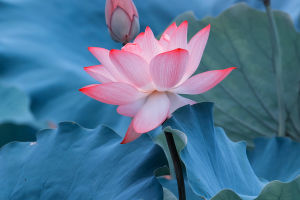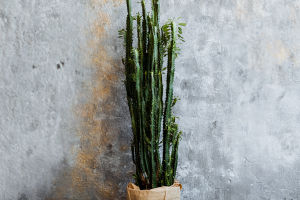We've all heard the famous line from Zhou Dunyi's "Loving the Lotus"—"The lotus emerges from the mud without being stained."
It's a symbol of purity and resilience, often portrayed as this beautiful flower that stays untouched despite growing in muddy waters.
But, do we truly understand why the lotus remains so pure? It's time to look beyond the familiar lines and explore the real science behind it.
The Myth of Self-Cleaning Leaves
Many of us have probably heard that the lotus's ability to stay pure is due to its "self-cleaning" leaves. These leaves are said to have microscopic structures that help them shed dirt and water effortlessly. And, to some extent, this is true. Under an electron microscope, the surface of a lotus leaf reveals tiny projections covered in a layer of wax. This special structure makes water droplets roll off the leaves, carrying away dirt and keeping the lotus clean.
However, when we consider this explanation in the context of the lotus growing out of mud, it doesn't quite add up. If the lotus's leaves could clean themselves as they emerged from the muddy water, they should have been fully exposed to it, allowing the self-cleaning effect to kick in. But have you ever seen a lotus leaf fully open and clean as it emerges from the mud? The answer is no.
The Truth Behind the Lotus's Purity
So, if the self-cleaning effect doesn't explain the purity of the lotus, what does? The answer is much simpler than we think. When the lotus first emerges from the mud, the young leaves are tightly wrapped in protective scales called "bud scales." These scales shield the lotus leaf from touching the mud as it grows. The same is true for the lotus flowers—before the flower blooms, it too is protected by these scales.
The bottom line is that the lotus never actually comes into direct contact with the mud as it grows. Therefore, it's not really a matter of the lotus staying pure despite the mud; it's that the mud never touches it in the first place. Once the lotus leaf or flower breaks through the mud, it quickly opens up, shedding the protective scales.
The Growing Lotus: From Mud to Water
Now that we understand the lotus's early growth stages, let's take a moment to talk about the lotus once it starts emerging from the water.
In the famous poem "A Little Lotus Bud," it's said that the lotus only reveals its delicate leaves after it has touched the water's surface. Before that, the lotus is shaped like an inverted "V," not yet fully opened. This is why it is virtually impossible for the lotus to collect dirt or mud at this stage. It's simply too tightly wrapped and shaped in a way that prevents it from touching the ground.
Why "Purity" is More Than Just a Physical Attribute
The lotus has long been a symbol of purity and grace in Chinese culture. However, the true purity of the lotus isn't just about avoiding physical contamination. It's about resilience and beauty in the face of adversity. The lotus thrives in muddy waters but remains untouched, just as we can rise above difficult circumstances and remain true to our values.
Wrapping Up: The Real Meaning of "Pure Lotus"
So, next time you see a lotus bloom, remember—it's not just a pretty flower floating serenely on the surface. It's a symbol of survival, protection, and growth in the face of challenges. It rises from the mud, not because it's immune to it, but because it is carefully shielded from it. The purity of the lotus lies not in some magical self-cleaning power, but in the protection it receives while it grows.
What do you think, Lykkers? Do you feel like you've learned something new about the lotus today? You'll look at it in a whole new light next time you see one!


